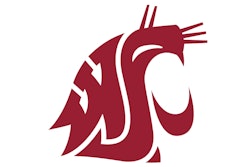Copyright 2014 Richmond Newspapers, Inc.
All Rights Reserved
After months of debate over a new Richmond ballpark, a key question likely to infuse the discussion as it returns to the City Council chambers is whether pieces of the plan can be rearranged while still bringing the city some of the benefits touted by Mayor Dwight C. Jones.
Several City Council members have stressed the need for flexibility in the mayor's plan to develop Shockoe Bottom and the Boulevard, while the Jones administration is presenting the plan as a comprehensive solution and as the only project that can move forward immediately.
"What we have, unfortunately, before us is a vision that was developed with no council input and no community input," said Councilman Parker C. Agelasto, 5th District. "I think as we go around talking about it, there are plenty of ideas, there are plenty of questions."
"We have a deal on the table that works -- it all works together to address the history of the area, create jobs, more housing, addresses a food desert and gives us a new ballpark," said Tammy D. Hawley, press secretary to the mayor, in an email. "Other ideas are out there, but no 'plan' backed by developers willing to invest and banks willing to finance."
Opponents of the Shockoe Bottom stadium plan recently produced a new set of images that offer the most detailed look yet at their vision to develop the Bottom as a historic/tourism area without a stadium while offering more protection for sites related to the slave trade and allowing for the private development planned by the mayor.
The alternative is by no means a fully fleshed out proposal that could go to the council for a vote, and the loosely organized group has not offered any estimates or analysis of what it might cost to implement their idea.
In an interview, John Gerner, a leisure-business consultant who is involved with the opposition group along with activists Ana Edwards, Phil Wilayto and historian S. Waite Rawls III, contended that if there's market support for the private development laid out in the mayor's plan, either the developers already involved or someone else would be interested in building up the Bottom.
"The developers are not doing this out of the kindness of their hearts," Gerner said. "They're not donors."
At last week's meeting of the City Council's Finance and Economic Development Committee, one of the developers involved in the mayor's plan said the stadium is key to his plan to build nearby.
"The hook is baseball," said developer David White of Historic Housing, who is involved in the residential component. "We can rent our apartments there for enough extra money to be able to afford the high cost of operations and construction."
Developer Charles McFarlane also said he would not be able to build the planned hotel without the stadium and other elements of the mayor's plan.
"I can say unequivocally that we would not," McFarlane said, adding that he feels that would hold true for most hotel-franchise developers.
The mayor's plan recently won the backing of a minority business organization that cited its potential to create jobs and revenue.
"We are unaware of any other plan that devotes comparable resources to honor the significant history that is the slavery and freedom history heritage site," Ken Ampy, chairman of the Metropolitan Business League board of directors, wrote in a letter to the editor in Sunday's Richmond Times-Dispatch. "For too long we have ignored and desecrated this hallowed ground."
The opposition group has produced 15 renderings of what a Shockoe development without a stadium might look like -- with park space, a water feature and a slavery museum where the stadium would go. The group also included images of a Manchester ballpark on the south bank of the James River, though city officials have said Manchester was eliminated as a potential site early in their analysis because the financial details simply would not add up.
The images were created with the help of Alex Beatty, Naomi Siodmok and Shawn Winter, three Virginia Commonwealth University graduate students in urban planning who volunteered their time.
The goal, stadium opponents say, is to show that the hotel, grocery store and apartments can happen in Shockoe without a ballpark.
"We see no reason why the city cannot do the same thing for this plan that it can for the other," stadium opponent Randolph Bell said.
Because the $11 million that former Gov. Bob McDonnell proposed in the state budget is not directly tied to baseball, stadium skeptics have suggested the historic project can move forward independently of baseball, though the city would still have to match the state money with $5 million.
Though no City Council members have publicly offered support to the opponents' plan, several have suggested that other ideas be considered.
At last week's meeting of the council's economic development committee, Agelasto pointed out that while the $56.3 million to build the stadium would be funded through project-specific revenue bonds issued by the Richmond Economic Development Authority, the planned $17 million infrastructure improvements to mitigate the Shockoe floodplain would be funded with general obligation bonds.
Because the city would not be using revenue from the stadium project to fund the floodplain mitigation, Agelasto said, the infrastructure projects do not have to be tied to the stadium.
"Every conversation about development in Shockoe Bottom to me has been contingent on the city putting in the investment of fixing the floodplain," Agelasto said. "And if that's not actually being funded by baseball ... then we can choose any type of project to go in there."
That prompted city officials to ask White, the residential developer, to respond.
"This site is a very expensive site to develop on and one I personally would not develop on absent the baseball stadium," he said.
A major selling point for the mayor's plan, according to the administration, is the ballpark's street-level concourse, which would provide emergency access to the nearby apartments that otherwise could not be built in the floodplain.
But that, too, has been questioned.
"While the use of the stadium concourse is an ingenious and creative solution to FEMA floodplain requirements for the portion of the parcel that is in the floodplain, other solutions could be equally so with additional creative thought and collaboration," Councilman Jonathan T. Baliles, 1st District, wrote in a December letter to the mayor.
Thus far, the Jones administration has shown little indication that the plan is open to significant changes.
"If others pick and choose pieces, the deal then breaks down and pieces go away and we are back to square one with a desolate area once again," Hawley said. "We haven't seen a plan without a ballpark that has been shown to be viable."
The mayor's plan is expected to go back to the council Monday, though it's not clear when a vote might occur.
(804) 649-6839
Twitter: @gmoomaw
Community meeting in Richmond Council President Charles R. Samuels, 2nd District, and Councilman Jonathan T. Baliles, 1st District, will host a Joint Community Meeting on the mayor's economic development plan for Shockoe Bottom, including a minor league baseball stadium, and the Boulevard.When: 6-8 p.m. tonight Where: Albert Hill Middle School, 3400 Patterson Ave.
Terms and Conditions Privacy Policy



































